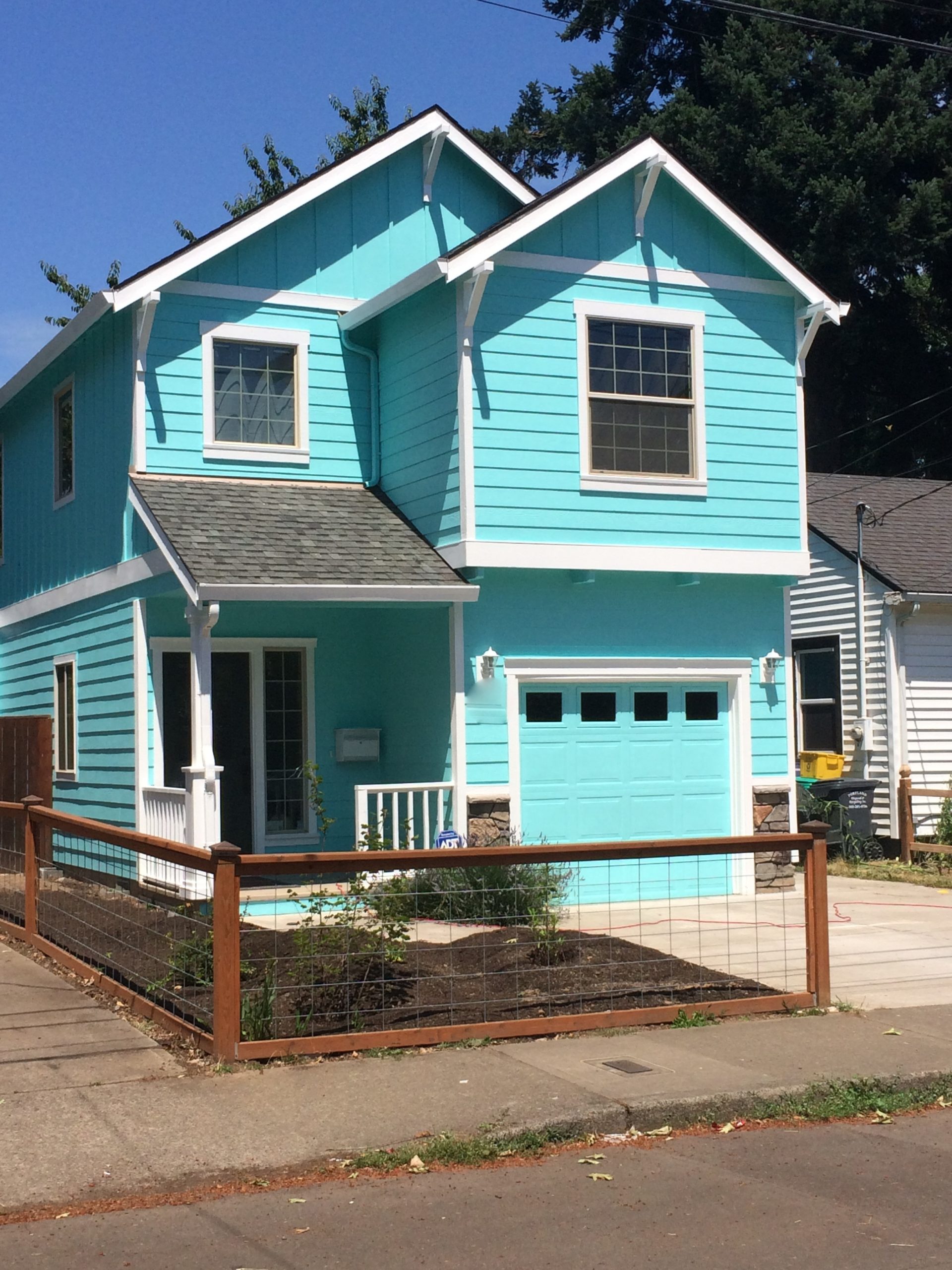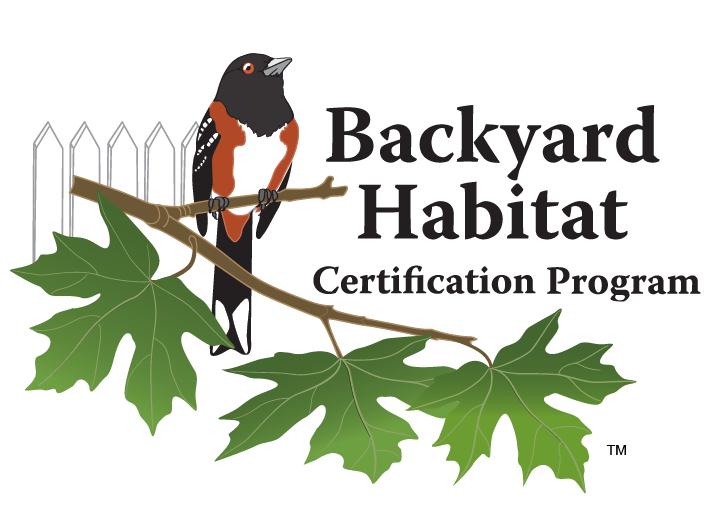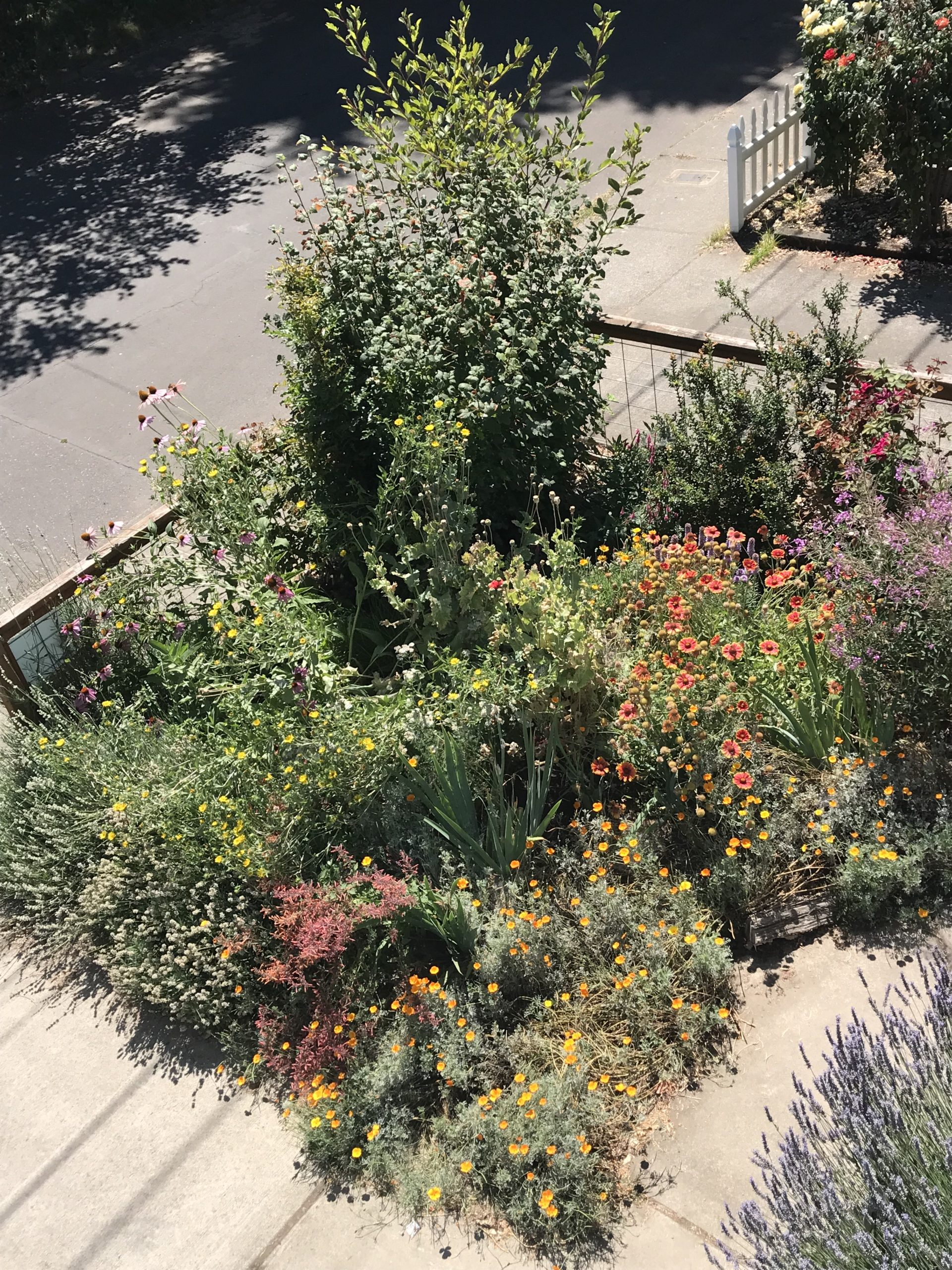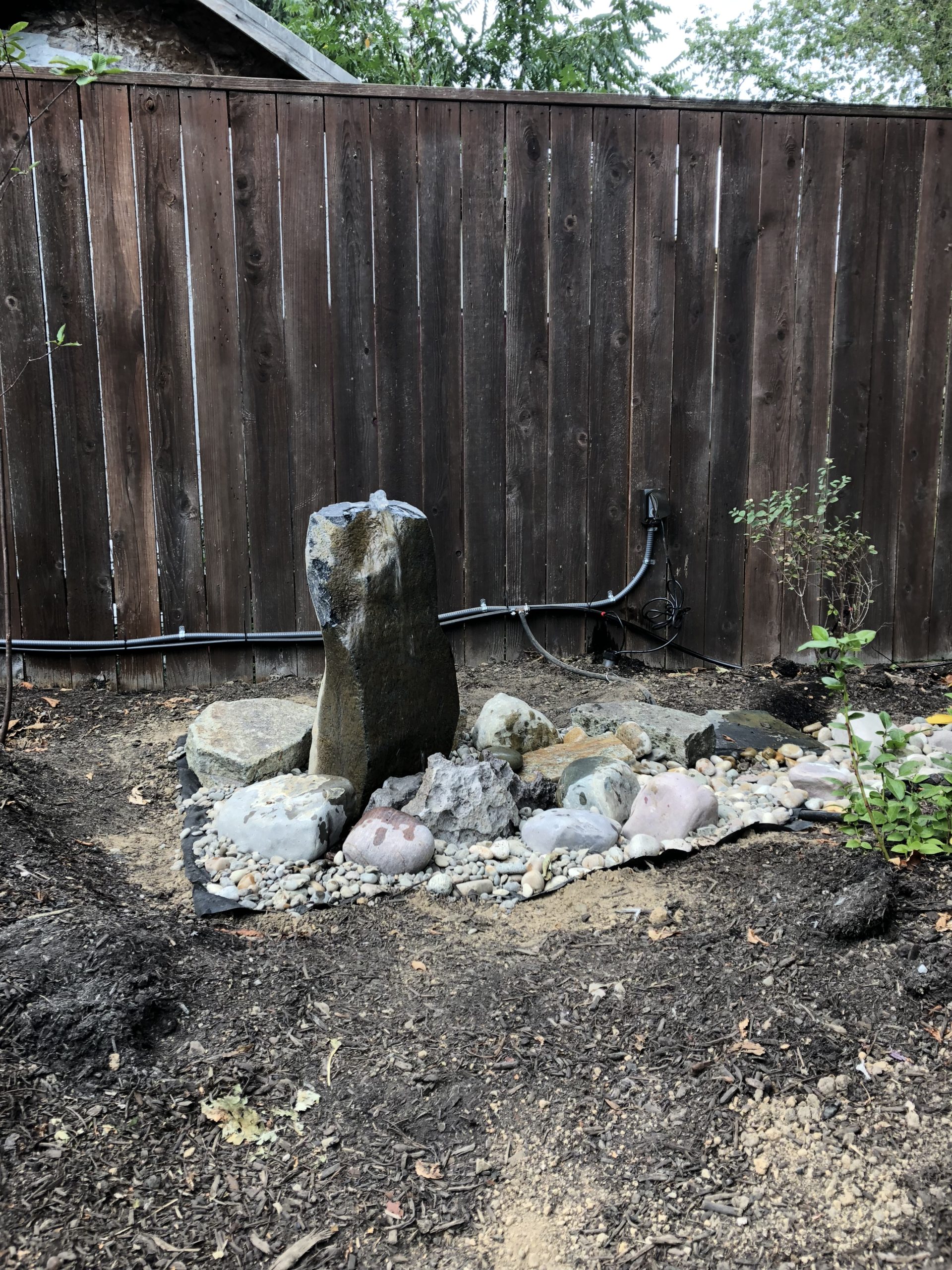Site Information: Paula’s habitat in North Portland has full sun to part shade to full shade conditions and dry to moist soil conditions
What inspired you to enroll in the Backyard Habitat Certification Program?
Walking around the neighborhood we noticed the Backyard Habitat Certification sign in some of the yards and decided to explore the Program. We wanted to create a place for wildlife by providing some missing key features that could help wildlife meet their life cycle needs.


Below: front yard now (2021)
How would you describe your habitat?
We removed lawn and sod matting, then brought in new dirt and mulch. We formed mounds for planting. Neighboring properties contained large trees that acted as a tall overstory vegetation layer. We complimented this overstory by adding a large and small shrub layer and ground level vegetation. A water feature in the form of a columnar bubbler was added. Water cascades down into rocks forming small pools. Bird and mason bee houses were added. Leaves in the fall were incorporated to improve soil health. Windows were treated to eliminate bird window collisions. A drip irrigation system was installed to conserve water while still providing water to plants. We brought in large rocks and wood as structural elements on the ground.
What are your top three favorite native plants and why do you love them?
- Red-twig dogwood because of the beautiful color of the bark and the growth form of the tree.
- Vine maple because of its delicate leaves and fall color.
- Fireweed because of its color and attractiveness to pollinators.
What changes have you observed as a result of creating habitat?
The diversity of birds and insects is phenomenal. Birds and insects are attracted by the bubbler and native shrubs. Hummingbirds, red-breasted nuthatches, brown creepers, and a variety of warblers and finches visit the yard. Native plants also provide food sources for insect pollinators throughout the year. Neighbors do ask questions and often compliment the yard. They also take photographs.


Below: backyard now (2021)
What were the two most significant challenges you encountered while creating habitat, and how did you address them?
Removal of the lawn and old sod matting, decompacting existing soil, and then bringing in and distributing new soil and mulch.
What resources did you find especially helpful?
The book Real Gardens Grow Natives by Eileen M. Stark and Plants of the Pacific Northwest by Pojar and MacKinnon. Also, looking at what other neighbors have done and learning from nature by taking walks in local parks such as Forest Park, Powell Butte and Tryon Creek areas. Visiting native plant nurseries and talking to nursery staff was also very helpful.
How do you enjoy your Backyard Habitat throughout the different seasons? What are its highlights in each season?
- In winter, the red bark of our dogwood tree provides nice color while birds use the nearby bubbler even while snow is on the ground.
- In spring, migrating birds come through and are attracted to the bubbler and the first flowering plants of the season such as red-flowering currant and tall Oregon grape.
- In Summer, while birds can be harder to see due to dense vegetation, the bubbler is still an attractant and makes them easy to view. Baby birds begin to appear, berries on shrubs begin to ripen, and flowers such as Puget Sound Gumweed (aka Willamette Valley Gumweed), cardinal monkeyflower (Oregon native), columbine, and fireweed are open.
- In Fall, the leaves changing provides a show of color particularly from our vine maple, dogwood, serviceberry and cascara buckthorn.
What part of your backyard habitat are you most proud of?
The density of the small tree and shrub layer, the attractant the bubbler provides for birds and the diversity of pollinator insects using the yard. It’s a lovely oasis.
Is there anything else you’d like to add about your journey?
We were surprised at how we could transform small spaces into rich habitats for wildlife. We enjoy being in our yard throughout the seasons.






